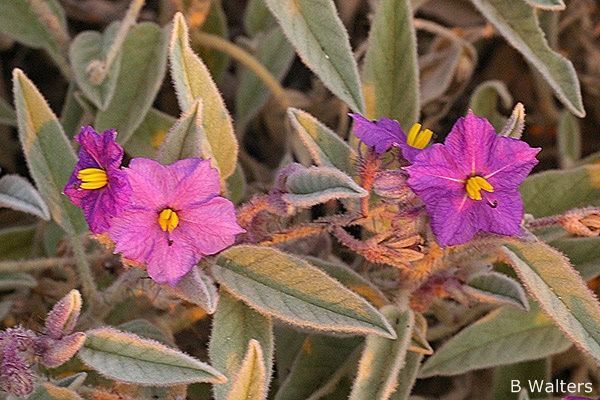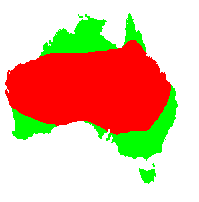General Description:
Solanum is a very large genus of about 1700 species with about 80 species native to Australia. Economically it is an important genus as it includes a number of human food crops including potato, tomato and egg plant. The Australian species include important “bush tucker” plants (of which Solanum ellipticum is one) but they also include species with poisonous fruits (eg. the fruits of Solanum sturtianum).
Solanum ellipticum is a small shrub or herbaceous plant of which may reach about 30 cm in height. It tends to die out during extended dry periods and resprout after good rains. The stems are prickly and the elliptical leaves are green above and greyish-green on the undersurface. They are hairy and about 5-7 cm long. The very attractive purple flowers are about 25mm diameter with conspicuous yellow anthers and occur mainly in spring-summer. The yellow-green fruits which follow the flowers are about 15-20 mm diameter. The plant is similar in habit to the poisonous S.quadriloculatum so experimentation if you are unsure is not worth the risk!.
Solanums, generally, are scorned as garden plants as most tend to be untidy in their growth habits and have a “weedy” appearance. However, they add a welcome splash of vivid colour. S.ellipticum is one of the more attractive members of the genus and would be worth considering for gardens in dry climates, particularly as the fruits are edible (although possibly slightly bitter to most people). The plant is frost tolerant and, for best results, it should be grown in full sun.
Propagation can be carried out from seed. However, the pulp may inhibit germination and it should be washed off the seeds. Cuttings are also reported to be successful.

Solanum ellipticum
Photo: Brian Walters
 Australian Native Plants Society (Australia)
Australian Native Plants Society (Australia)